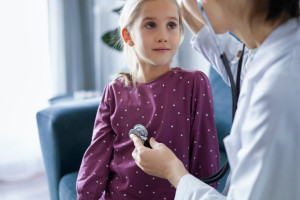They sprouted like mushrooms after the rain. And now there's concern about the health impact of graduation towers.

Author: prepared by MCD • Source: Rynek Zdrowia, Infor.pl, Smoglab.pl • Published: July 17, 2025 1:53 PM
Although we tend to associate municipal salt graduation towers with beneficial effects on our health, scientists from Krakow have found evidence that the opposite may be true. The microbiological purity of the salt water circulating in the towers often leaves much to be desired, warns Infor.
- Salt graduation towers have become fashionable and desirable in Polish cities, they can be found far from Ciechocinek or Inowrocław
- Walking around buildings from which brine flows is commonly associated with health benefits
- A completely different perspective on graduation towers is provided by a report by scientists from Krakow, who found evidence that they may pose a health risk.
Popular saltwater graduation towers are taking cities by storm. Although they are associated with health benefits, they can be hazardous to health. This was demonstrated by research conducted in 2021 and 2022 on the municipal graduation tower in Nowa Huta by scientists from the Hugo Kołłątaj University of Agriculture in Kraków, the results of which were cited by the website Infor.pl.
The results of microbiological tests of the brine, which included analysis of the presence of mesophilic and psychrophilic bacteria, as well as indicators of microbiological water quality, showed the presence of dangerous bacteria :
- E. coli,
- E. faecalis,
- C. perfringens.
The researchers found the highest number of microorganisms in June, when the highest average temperatures and lowest brine concentrations were recorded. This was also the period when Nowa Huta was hit by heavy rains and floods. The city's graduation tower was also flooded. Although the dramatic drop in brine concentration translated into a sharp increase in the number of microorganisms, as the researchers point out, no concentration (even the optimal 17-19%) completely eliminates bacteria from the water.
- The presence of E. coli, E. faecalis and C. perfringes bacteria, even in trace amounts, in brine is very disturbing - pointed out the co-author of the aforementioned study, Prof. Katarzyna Wolny-Koładka, quoted by Infor.pl and previously also by smoglab.pl.
Meanwhile, the Regulation of the Minister of Health of 13 April 2006 on the requirements to be met by medicinal water used for inhalation states that any amounts of E. coli, E. faecalis and C. perfringens bacteria in water used for inhalation are unacceptable .
E. coli, E. faecalis, and C. perfringens cause a range of harmful infections. Direct ingestion or inhalation can lead to:
- inflammation of the stomach and intestines,
- necrotizing enterocolitis,
- food poisoning,
- urinary tract infections,
- diarrhea,
- kidney damage,
- endocarditis, or
- peritonitis.
Tests also confirmed the presence of bacteria and mold in the mist, though not in amounts exceeding recommended levels. Unlike saline water, no E. coli bacteria were detected in the spray.
However, as scientists warn, it should be borne in mind that "with the increase in air temperature and the decrease in brine concentration, the number of analyzed microorganisms (especially actinomycetes and staphylococci) in the brine mist increases."
Lack of regulations. Scientists have created recommendations for graduation tower administrators.The seriousness of the problem is especially compounded by the fact that the brine mist produced by closed-circuit graduation towers is not subject to microbiological control. There are no regulations imposing such an obligation, nor are there any standards for assessing microbiological contamination of atmospheric air.
Therefore, scientists from the University of Agriculture in Krakow - as reported by Infor - took matters into their own hands and formulated recommendations for the administrators of municipal brine graduation towers and legislators, compliance with which would improve the microbiological quality of brine in the closed circuit of the graduation towers and thus increase the health safety of its users.
Scientists' recommendations addressed to manufacturers and administrators of graduation towers (and indirectly also to their users):
- People using the inhalation facility should be educated on responsible behavior in the graduation tower area: not to soak their hands and feet in the brine flowing from the blackthorn, and to keep small children and dogs away from the tank into which the brine flows;
- The graduation tower administrator should, as before: measure the brine concentration every day and ensure the cleanliness of the system in which the brine circulates;
- Consideration should be given to replacing all brine circulating in the closed system more frequently and disinfecting the installation each time;
- It is advisable to introduce continuous microbiological monitoring of the brine circulating in the graduation tower: monitoring can be carried out as described in the manuscript2 or in an automated manner;
- An automated sampling and analysis system could also be implemented, but this would require some modifications to the graduation tower design;
- Some modifications can be made to the brine distribution system in the graduation tower: by installing additional brine filtration points (bacteriological filters), it would be possible to purify the brine during its circulation in the closed circuit of the graduation tower.
Legislators and scientists recommend regulating the issue of microbiological control of brine fog produced by municipal graduation towers.
Copyrighted material - reprint rules are specified in the regulations .
rynekzdrowia













